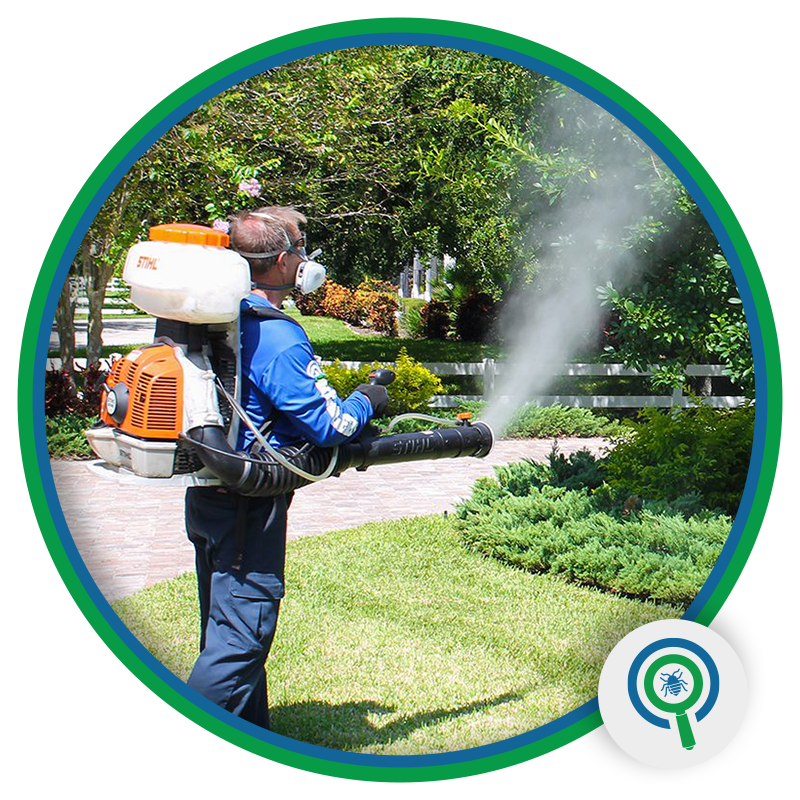
Plaster Bagworms
Learn About Plaster Bagworms
Frequently Asked Questions
-
Where am I likely to find plaster bagworms?Inside, plaster bagworms are most often seen hanging from the ceilings and walls of homes. They move to places in your home where they have access to food. They have a particular liking for stucco walls, cobwebs, and hot, humid climates- making them a common problem inside of structures located in Florida.
-
Why do I have a problem with plaster bagworms?Plaster bagworms have become a problem in your home because it is offering them a safe, suitable environment to survive with easy access to their favorite food sources. To keep plaster bagworms from taking up residence inside of your home, it is important to use air-conditioners and dehumidifiers to reduce humidity levels. Plaster bagworms like to feed on dust, lint, and spiderwebs. Therefore, vacuum and dust regularly to remove these common food sources from your home. They also feed on fabrics made of natural fibers so storing clothing and other fabric items in plastic, air-tight containers instead of cardboard boxes is important.
-
Are plaster bagworms dangerous?Plaster bagworms are not considered dangerous pests, but they are damaging. The larval stage causes most of the damage inside of a home they have invaded. The larva feeds on and damages rugs, clothing, and fabrics made of natural fibers. They also feed on shed human hair, dead insects, and cobwebs.
-
How do I get rid of plaster bagworms?The easiest way to get rid of plaster bagworms is to partner with a professional. If you’ve discovered plaster bagworms in your home or business, Keller’s Pest Control offers effective plaster bagworm control services. Our team has the knowledge, skills, and tools necessary to rid your property of these nuisance pests.

-
 Plaster Bagworms
Plaster BagwormsClosely related to moths, Plaster Bagworms are known for the protective case, or "bag," that they carry as they move around. The cases are made of silk, dirt, and other debris, often giving them a grayish or brownish appearance. Plaster bagworms have an interesting lifecycle that includes:
- Eggs: Plaster bagworms live throughout the winter as eggs inside a protective bag. Usually more than 200 eggs incubate in this protective casing.
- Larvae: During this stage in their lives, plaster bagworms typically cause the most damage. As a larva, the plaster bagworm creates a bag to protect itself as it feeds on wool, silk, spiderwebs, and other organic material. This bag-like case they create distinguishes this insect from others.
- Pupal: This is known as the resting stage and lasts for about four weeks until the plaster bagworm is ready to emerge as a moth.
- Adults: The adult moths are gray with up to four spots on their forewings. They have “feathery” hair-like scales along the edge of their hind wings. Females release a pheromone to attract males, and once fertilized, they will find a safe place to lay their eggs to begin their life cycle again.
Bagworms make their notorious protective casings from lint, silk fibers, and other debris they come across. This grey-colored bag is about 1 ½ inches long and shaped like a pumpkin seed. It has slit-like openings located at each end where larvae, once hatched, crawl out to feed.

Pests Beware. We Care!
Trust Keller's Pest Control For Reliable Service With Integrity
-
No Obligation Estimates
-
Family-Owned & Operated
-
29+ Years in Business
-
Knowledgeable Technicians
-
Customer Top-Rated
-
No Contracts


-
"Knowledgable & Efficient"The technician was so knowledgeable about my bed bug issue. They came in with a heat machine and eliminated the bug quickly and efficiently. I was able to get my rental back in action the next day! Great company.- Christopher W.
-
"Longtime Customer"We have been working with Keller’s for a long time and could not be happier with their service and expertise. They are responsive and honest. We appreciate the technicians and the office team. Thank you, Keller’s Pest Control!- Christine S.
-
"They Explained Everything"Keller's was very quick to respond to my call and came to the house at my convenience. They did such a great job at explaining things and I went with the quarterly service plan. Very reasonable pricing and gave us piece of mind.- Ron Q.
-
"A+ Communication"I've been using Keller's for over three years now and they've been great. I've had some bug problems and they have been very responsive at fixing them even if it meant showing up out of cycle to handle. Communication is key and they get an A+.- Jeff I.
-
"Exceptional Company"Keller's Pest Control is exceptional in every way! Their team is knowledgeable, professional, and genuinely dedicated to ensuring a pest-free home. From quickly addressing serious issues to providing regular, reliable maintenance, they’ve exceeded.- Aleks S.
-
"4+ Year Customer"We have used them for over 4 years. Our technician is very knowledgeable and professional. We are gone from the property sometimes as long 4 months and never have any pest issues. We highly recommend Keller’s Pest Control.- Bill B.
-
"Outlined Treatment Plan"The technician was great and clearly explained what issues we were having in our home. They outlined the treatment plan to address those issues and the time frame. Very friendly and we look forward to a great relationship as their happy customer.- Kevin A.
-
"Bed Bugs Gone"Keller’s Pest Control is by far the best service we’ve ever had! Patrick Keller is professional, thorough & amiable. The bugs have been gone ever since they first serviced us! We will continue our service can’t recommend them enough.- Sara M.
-
"10+ Year Customer"I’ve used Keller’s for pest control at my house for more than 10 years. They have always provided excellent, speedy, and complete service. It's pleasure to do business with them.- Bob W.

Go With the Team You Trust.
See Our Proud Affiliations, Certifications & Awards

-
 Our Reviews
Our Reviews -
 Read Our Blog
Read Our Blog -
 Save on Service
Save on Service








